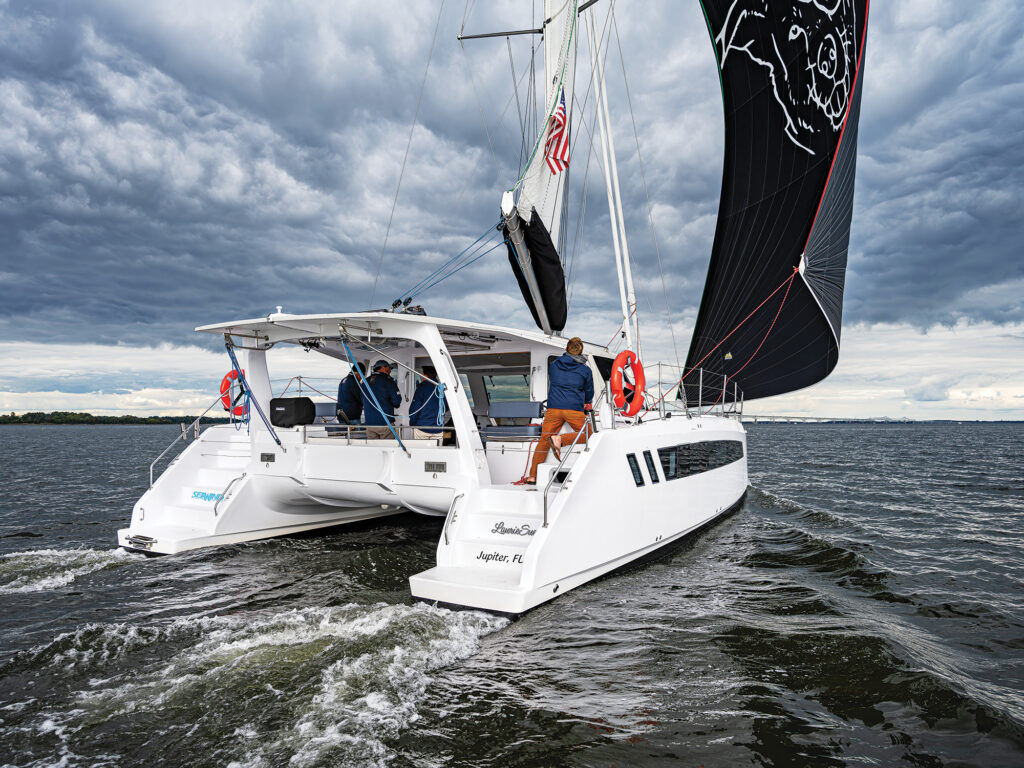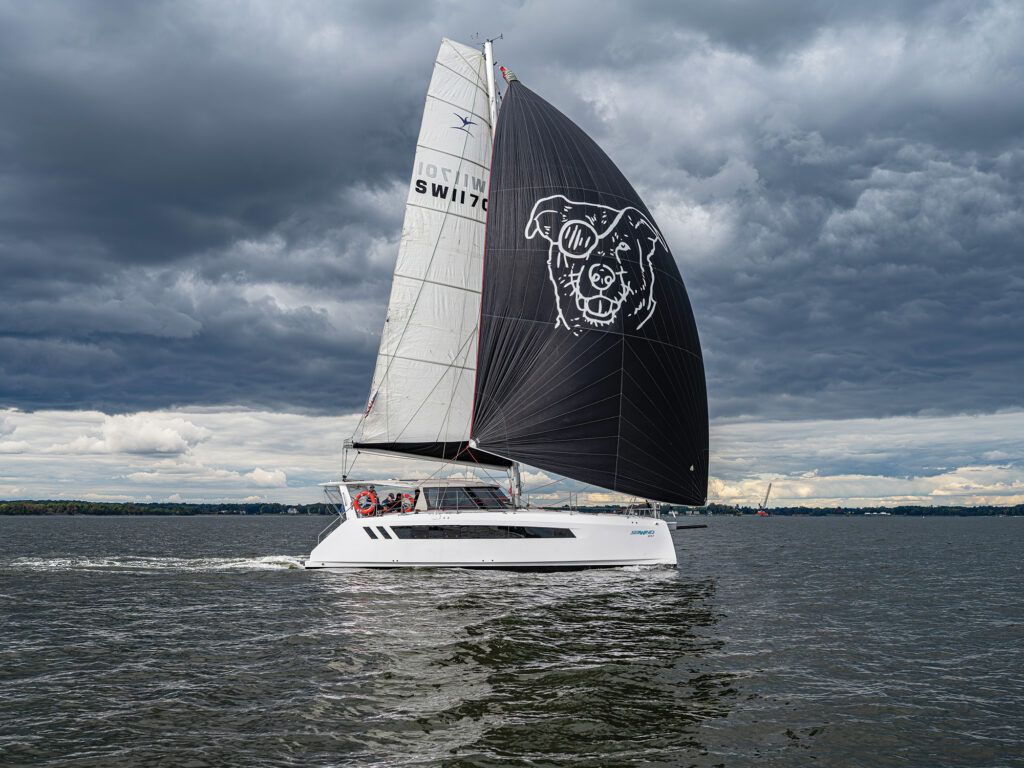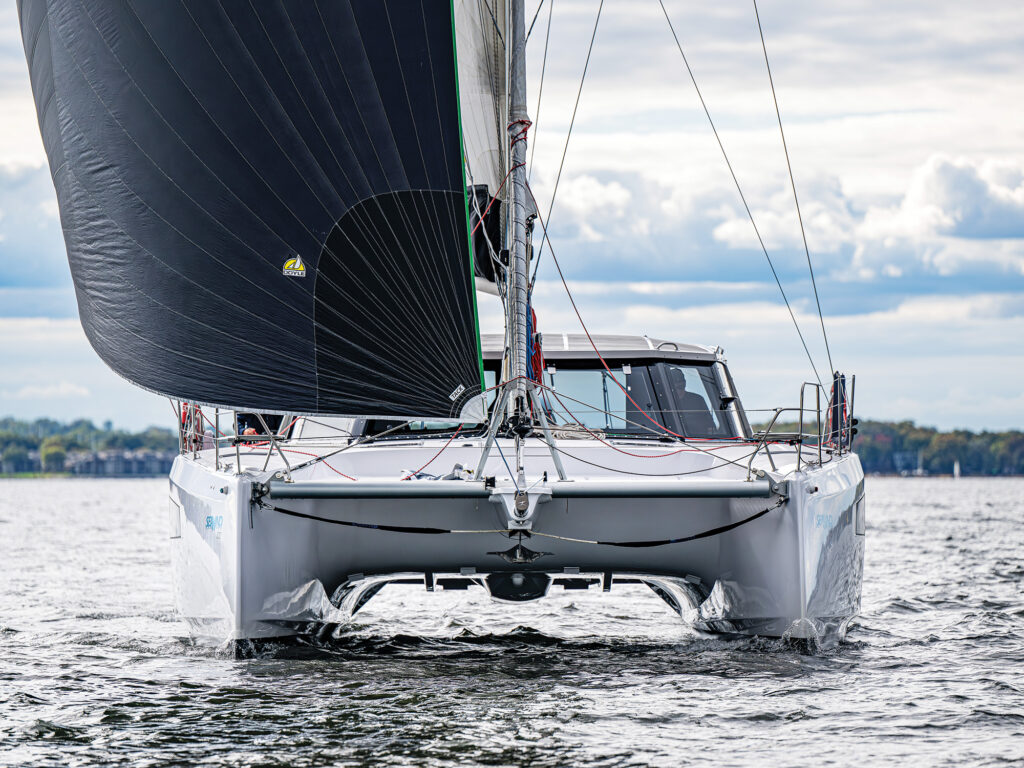
Before he became a cruising sailor, Aussie yacht designer and boatbuilder Richard Ward was a surfer. Yes, the driving force behind Seawind Catamarans for more than four decades now was already more than a little familiar with the abundance of inviting point breaks up and down the coast of New South Wales. His surfing experiences have played a major role in his design career. He creates clean, straightforward lines that translate into easily driven hulls. His innate love of the ocean, also informed from the nose and rails of a surfboard sluicing down waves, is icing on the cake.
Seawind’s latest offering, the 39-foot Seawind 1170, is a compact package that combines well-tested features from previous models with a fresh helping of new technology. In spirit and layout, it is expressly geared toward cruising couples. Cruising cats seem to be getting larger and rangier; delivering all the necessary amenities and performance in a vessel under 40 feet is a challenge—one that the 1170 addresses quite nicely.
In profile, the cat looks sleek and contemporary. The bows are raked slightly aft, and the generous freeboard is accented by a reverse sheerline. There’s a fixed carbon bowsprit for setting a code-zero-style screecher forward, and there are molded-in steps from the deck to the waterline in the transoms. A chine in the hull that increases the interior volume in the belowdecks staterooms extends almost the length of the waterline, and is aligned with the parallel windows in the hull. The solid coachroof extends aft over the entire cockpit, offering protection from the elements. The visuals all come together nicely.
The first two boats off the line, including our test boat for the 2024 Boat of the Year contest, were built in Seawind’s longtime Vietnam facility. Going forward, the boat also will be produced in the company’s new boatyard in Turkey. The infused hulls and deck are vinylester with a PVC foam core that is cut with kerfs to accommodate the curved surfaces. The bulkheads are composite laminates, and there is carbon reinforcement in high-load areas. Molded channels in the coachroof serve as a gutter of sorts for catching rain, and a hose with a filter can be led directly to the water tanks to get topped off in the squalls.

The test boat we inspected had a CZone digital switching system, a set of lithium-ion batteries, and a full suite of coachroof-mounted solar panels (all options). A company representative said that this arrangement offers the juice necessary to power an air-conditioning unit overnight.
The owner’s stateroom occupies the entire port hull, with an island berth forward and an en suite head with a walk-in shower aft. To starboard, the straight-line galley is sandwiched by a pair of double staterooms fore and aft. This galley-down plan opens up the main cabin, with a wraparound settee whose port side doubles as a day bed and the bench for the navigation station. An offset table can be spun around to seat guests or dropped down to make a double berth—a good option for the off-watch crew to stretch out on passage but still be close to everything. The coachroof windows can be raised to let plenty of fresh air course through.
Topside, the features will be familiar to Seawind fans, including a trifold door that can be raised to the underside of the coachroof to integrate the cockpit and main cabin into an open space. The twin wheels are mounted well outboard and on the same level as the cockpit sole, providing terrific 360-degree visibility of the entire boat when sailing or docking. The mainsheet and traveler arrangement is overhead on the coachroof to keep the cockpit uncluttered. All the gear is top-shelf, including the Harken furlers, Gori propellers and Maxwell windlass.

We sailed the boat on a pleasant fall Chesapeake Bay day with a breeze between 8 and 12 knots. The 1170 acquitted itself well. With the self-tacking Doyle jib employed sailing to weather, we touched almost 6 knots. When we stashed the jib and swapped over to the screecher, things got lively. On a tight reach sailing at about 60 degrees apparent, the boat zipped along at more than 7 knots. Cracked off to a beam reach, the speedo notched up to nearly 8 knots. Steerage was sweet and light, and it was a lot of fun dashing from one helm station to another on tacks and jibes.
All in all, the 1170 did everything we expected it to do, with style and panache. The seasoned surfer responsible for it wasn’t around that day, but his spirit and intent most certainly were evident.
Seawind 1170 Specifications
| LOA | 39’3″ |
| Beam | 21’4″ |
| Draft | 3’9″ |
| Sail Area | 783 sq. ft. |
| Displacement | 19,841 lb. |
| D/L | 147 |
| SA/D | 17.1 |
| Water | 132 gal. |
| Fuel | 135 gal. |
| Engine | Twin 29 hp Yanmar diesels |
| Design | Richard Ward |
| Price | $510,000 |
| Info | seawindcats.com |








